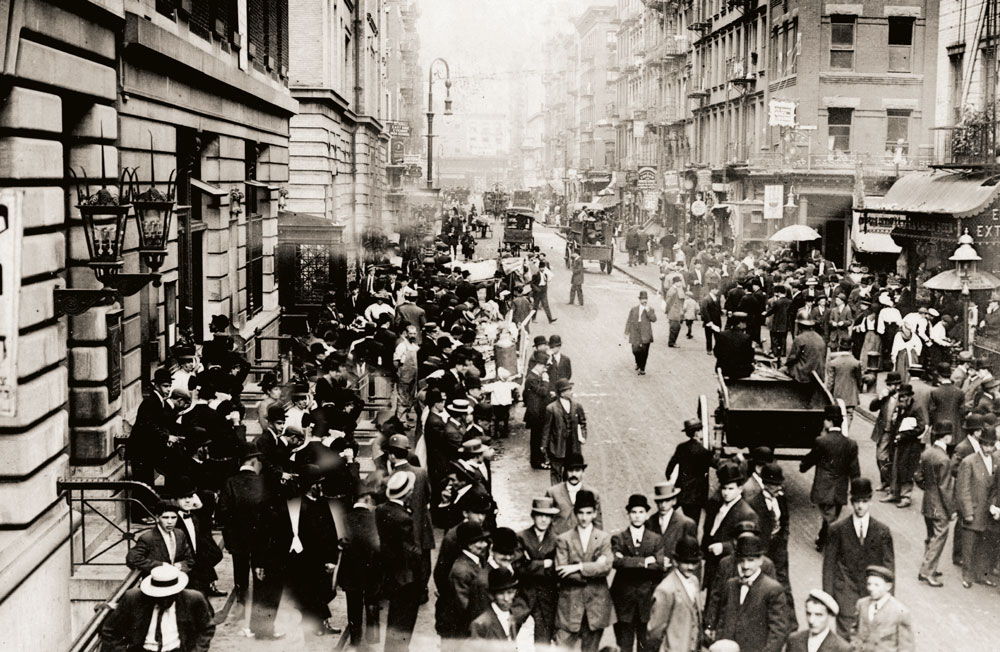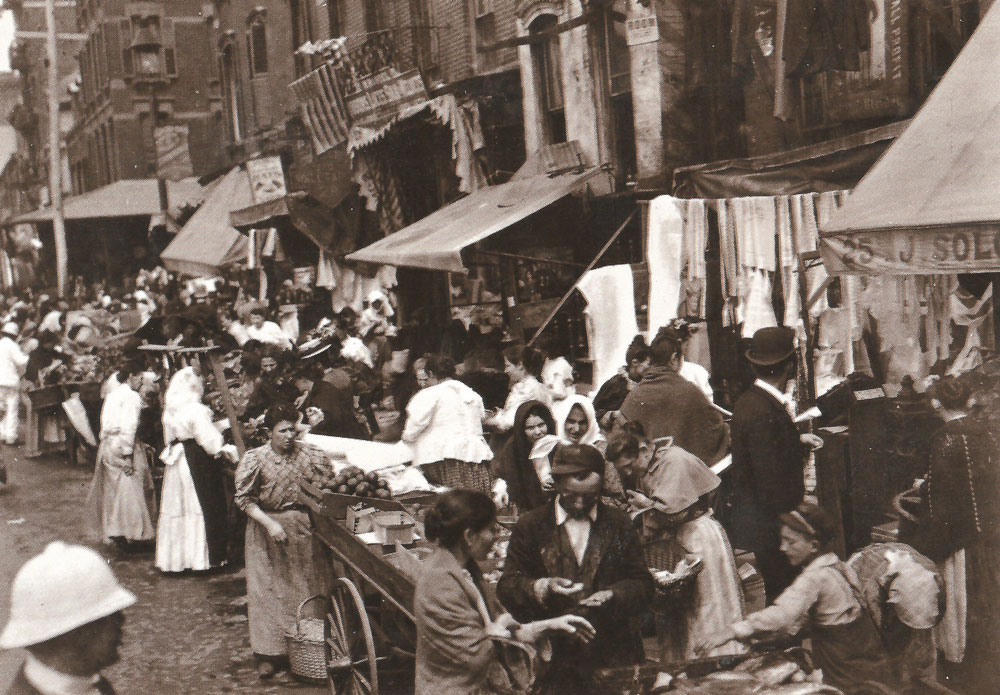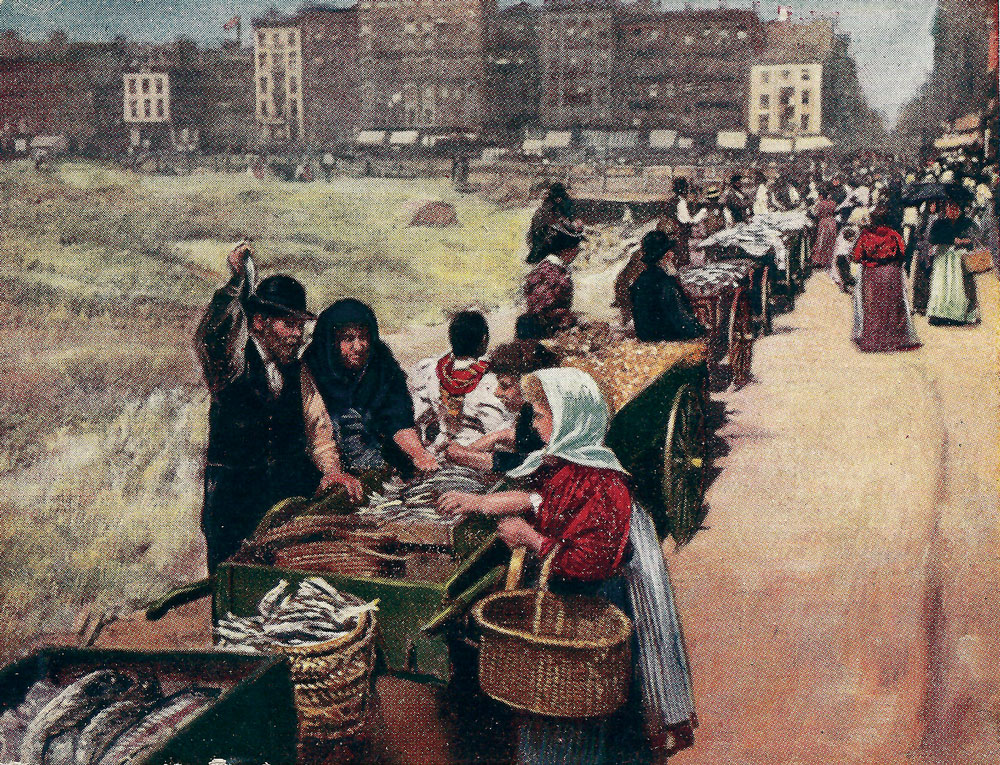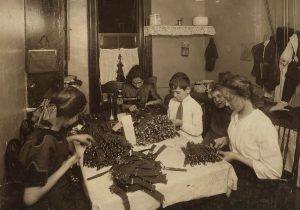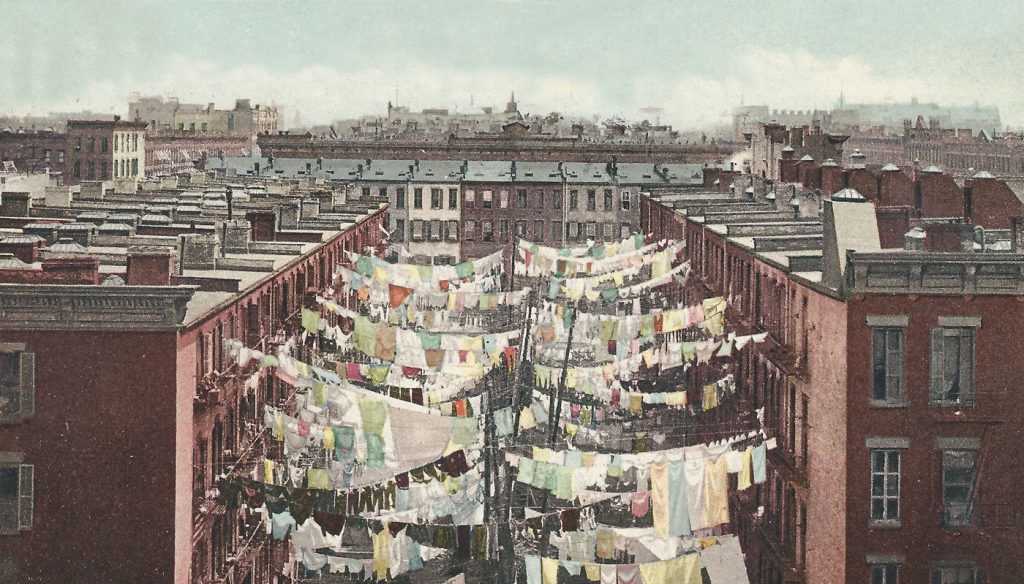A Jewish Bubble
Rosh Hashana, the Jewish New Year, 1949. New York – downtown, uptown, Bronx, Queens or Brooklyn. Shuttered stores closed for the High Holidays, the devout off to services in “shuls” and “temples” of every size and denomination. But outside the synagogue walls, along the boulevards, many more men, women and children promenade, dressed up in their holiday best, anxious “to see and be seen” by their fellows. Strolling within the confines of their Jewish city, these masses were not antagonistic towards faith but simply disinterested. Of all the scenes typically associated with the hustling, bustling Jewish community of Gotham, as New York City was affectionately nick-named, this is perhaps the one with the most continuity, still playing itself out in a modern version on the upscale streets of Manhattan today.
Rhapsody in Bronx
For more than a century, New York City was home to the largest Jewish community in the world. Only recently—in the new millennium—has Tel Aviv surpassed the metropolis as an unequaled destination and home. The growth of Jewish Gotham was, of course, favored by the city’s position as the foremost point of embarkation for East European Jews who sought American shores. Out of the two and a quarter million who entered the United States between 1881 and the First World War, close to two-thirds came through Castle Garden and later Ellis Island in Manhattan’s harbor. From there, the Lower East Side became the renowned first home of the newcomers.
The Jewish market on Hester Street, on the Lower East Side, at the beginning of the 20th century. The movie Hester Street was filmed here in the 1970s. The Jewish immigrant community once centered here has been replaced by other new immigrants, and the street has become part of Chinatown
By 1917, there were one and a half million Jews in Gotham, living not only downtown but in new enclaves in Upper Manhattan – most notably Yorkville and Harlem – and over into Brooklyn’s Williamsburg and Brownsville. One out of every four New Yorkers was a Jew. This strength in numbers persisted through both the 1920s decade of economic progress and the vicissitudes of the Great Depression and the war years. More often than not, when New York Jews relocated, they did so together. In the 1920s, the pull was to the Bronx, to Manhattan’s West Side or Washington Heights and to the new Brooklyn neighborhoods of Flatbush, Boro Park, and Bensonhurst among other settlements. And they sunk deep roots in these enclaves. In the late 1940s-1950s, suburban life, in Nassau and Suffolk counties, in Westchester or over the George Washington Bridge into Northern New Jersey, lured many from the old neighborhoods. At the same time, Queens became, as its boosters put it, “a suburb within city limits,” staking the claim that residents could have all the bucolic advantages of life outside of New York City without the hassles of commuting to Manhattan for work or entertainment. Yet, notwithstanding a range of attractive options, even more Jews stayed right where they and their parents had lived. As of the late 1950s, Jews were still close to a quarter of New York’s residents. And more than one out of every four New York Jews lived in a neighborhood that was over half Jewish.
In 1949, writer and historian Ruth Glazer explained what had, for example, kept the Grand Concourse Jewish, three decades after the neighborhood on that wide north-south Bronx thoroughfare first became home to those who had advanced economically. She rhapsodized to the readers of Commentary magazine (June, 1949) that there still is
more life, vigor and excitement in one single Bronx apartment house at six o’clock in the evening than in a thousand elm-lined Main Streets on a Fourth of July. What streets anywhere can match them in their sheer number of food stores, ice-cream parlors, delicatessens, restaurants, specialty shops for women and children…The role of the Concourse in Bronx life, like its geographical location is central… a name to conjure with…At one end of the Concourse there is a small but intricate park, complete with bandstand and Sunday afternoon concerts…There is the middle section where one may see and can be seen.
Glazer observed that “the present generation is only the continuator and the embellisher of the Bronx style.” On these streets it was possible to believe, as she and many other memoirists did, that “the whole world was Jewish,” even if they were reminded that they were hardly alone when they ventured out by foot, bus or subway into often hostile Irish, German or Italian preserves. There were almost no White Anglo-Saxon Protestant communities in Gotham. They were out there, somewhere, in remote America.
Organizations at Every Corner
This strength of numbers – rarely paralleled in a diaspora settling – connected Jews with each other in the most, organic, informal way. For generations, immigrants and then their children and grandchildren met up in apartment elevators and stairwells or on park benches or near Bronx bandstands. In February 1960, reporter Sam Welles wrote in Fortune magazine that such open air concerts were “the only place in the world where…you can pick up a girl by whistling a Beethoven quartet at her.” Jewish Gotham was large enough to house almost every conceivable national, regional and local Jewish religious, fraternal, Zionist, philanthropic and radical Jewish organization. Ensconced within America’s communications capital, these were ideally positioned for the critical task of getting their message out. However, success was far from assured. Out on the streets, many sauntered blithely past the committed, reaching out to followers with their ready placards, hand bills and petitions. Organized Jewish life just did not catch their fancy. Their ongoing indifference posed a constant challenge to organized religion, with the result that each of the three major Jewish denominations placed an emphasis on outreach, seeking to expand their influence beyond their limited core constituencies. They built their schools for the training of rabbis and teachers for the entire United States within Manhattan.
A Jewish family working on garters in its tenement kitchen in New York, 1912.
Like other immigrants, the Jews lived in terribly crowded conditions. While the first generation focused on economic survival, the second and third left the “ghetto” for the more spacious suburbs
Gotham’s last half century witnessed the racial crises of the 1960s, the mid-1970s financial meltdown and the past generation’s roller-coaster ride of reemergence, regression and the reestablishment of New York as a city of promises and harsh realities. Amid the rapid crises and transformations surrounding and sometimes consuming them, the Jewish neighborhoods of the past declined. Many once-Jewish locations in the Bronx, for instance, are no more.
Young families in the 1960s-1970s sought the suburbs’ more salubrious settings, which held out the promise of better schooling for their youngsters and improved quality of life – even if it meant that fathers and mothers braved daily traffic problems to reach their city jobs or to spend an evening on the town. The older generation was often left behind. In their new home towns, where they got along well not only with fellow Jews but with friendly Christian neighbors, formal identification became more important. Here, where there were few apartments and cull de sacs, and walkways and driveways took the place of sidewalks, it was now far more difficult to link up. Synagogue and community affiliation became more central as the Jewish community dispersed.
Meanwhile, within the city that up to the present day, through times good and bad, has remained home to close to a million Jews, neighborhoods now are frequently characterized not only by strength of numbers, but by commitment to the faith. Orthodox leaders in Brooklyn and elsewhere draw upon their many devoted followers, who gravitate naturally to synagogues and study houses. If rabbis ever have to patrol their streets in search of congregants, they do so to preclude attendance at a competitor’s own store-front shtibl. Elsewhere, innovators and community-builders, advocates from more liberal movements, face greater challenges in promoting “renewal.” However, their messages have found avid listeners among those seeking for a place to which they can truly “belong.” Still, there are, as always, the saunterers about town, those unattached Jews who have left their parents’ suburbia for the promise of a gentrified New York.
Tenement yard in the heart of New York, 1910. New immigrants and underprivileged transplants from other parts of the U.S. have transformed once Jewish neighborhoods into crime-ridden areas. Only recently have housing prices begun rising due to overcrowding elsewhere in the city
Like many others attracted by the city’s magnetic pull from all over America, they blend in with members of diverse ethnic backgrounds to create a new cultural texture in the streets where they live. With friends of all sorts and backgrounds, they do not sense that their whole world is – or should be – Jewish. They do, however, maintain one long-standing tradition still left from Jewish days on the Grand Concourse. On Rosh ha-Shanah, shunning synagogues that would welcome them with open arms, many can be found promenading around their quiet neighborhoods. On this unofficial civic holiday, many stores, businesses and offices as well as the public schools are closed due to lack of customers or the paucity of student and faculty attendance. But the crowd of strollers is now likely to include non-Jewish friends and, increasingly, Christian relatives. These young people’s identities are far more “New Yorker” than “Jewish,” with an emphasis on what they have in common with all those who, like themselves, have chosen to live in Gotham. If anything, this disposition has intensified in the decade since 9/11. Comprehending that a united city must stand firm against threats from without, yet be willing to address enduringly stubborn challenges from within, the young New Yorkers are secure in their conviction that this city offers them, and all others, the most profound opportunities to live safe, secure, worthy and meaningful lives. Such has always been New York’s foremost promise.

